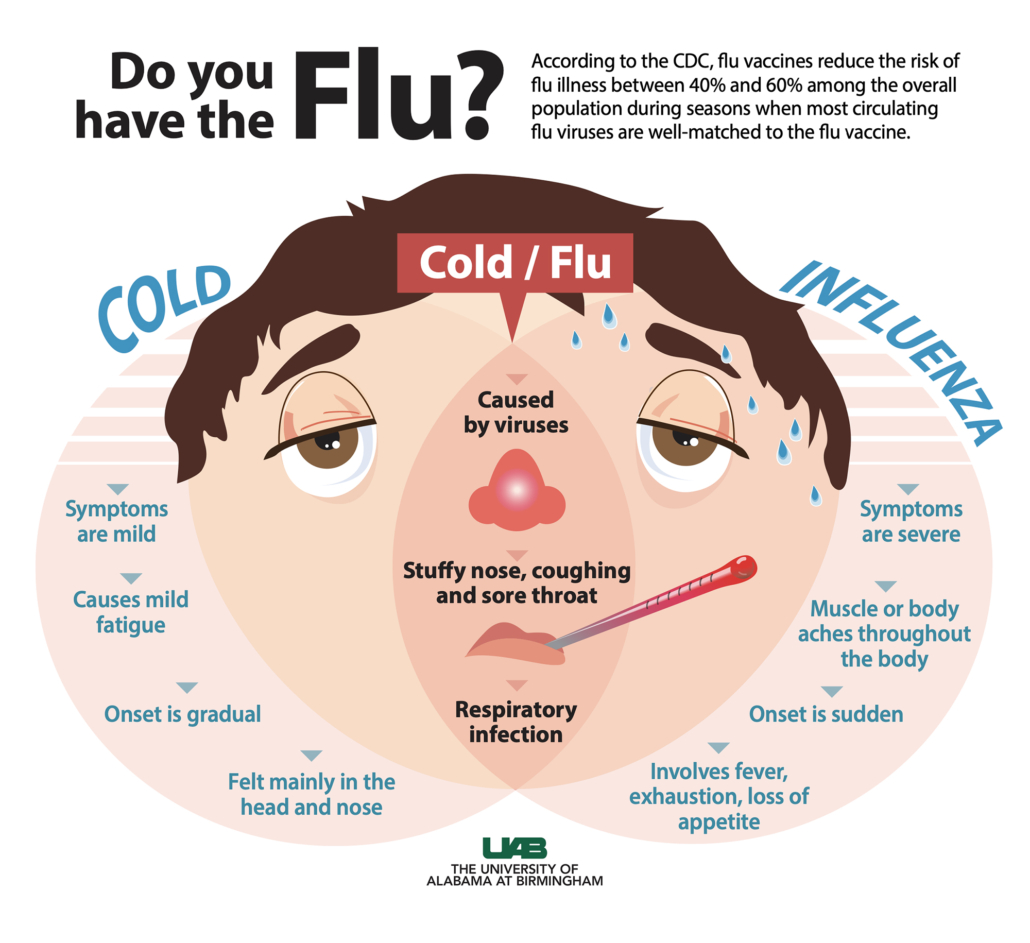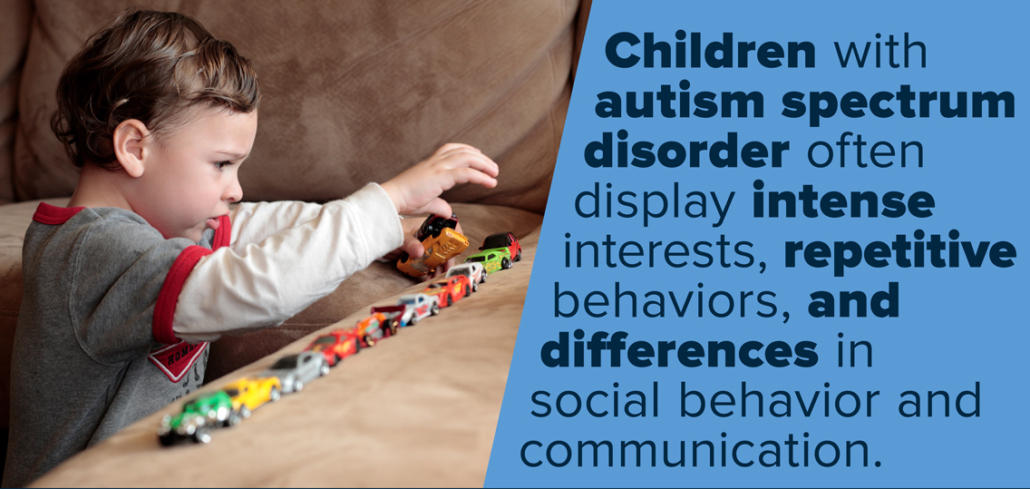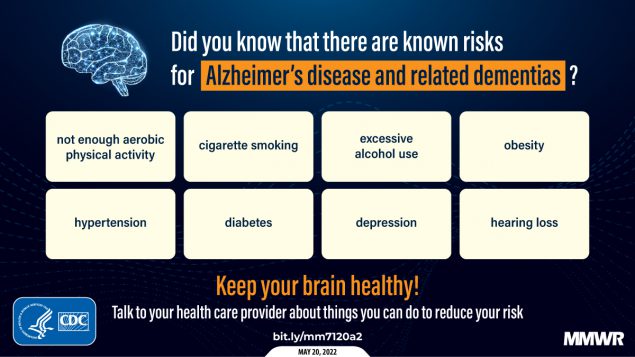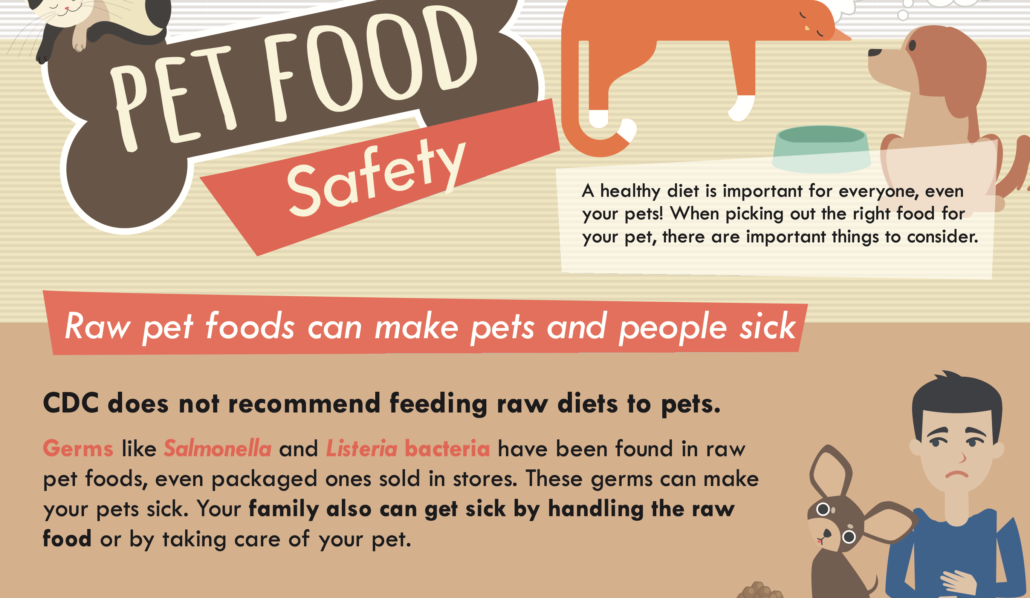How to Prevent Flu
Take time to get a flu vaccine.
- CDC recommends a yearly flu vaccine as the first and most important step in protecting against flu viruses.
- Flu vaccines help to reduce the burden of flu illnesses, hospitalizations and deaths on the health care system each year. (Read more about flu vaccine benefits.)
- This season, all flu vaccines will be designed to protect against the four flu viruses that research indicates will be most common. (Visit Vaccine Virus Selection for this season’s vaccine composition.)
- Everyone 6 months and older should get an annual flu vaccine, ideally by the end of October. Learn more about vaccine timing.
- Vaccination of people at higher risk of developing serious flu complications is especially important to decrease their risk of severe flu illness.
- People at higher risk of serious flu complications include young children, pregnant people, people with certain chronic health conditions like asthma, diabetes or heart and lung disease, and people 65 years and older.
- Vaccination also is important for health care workers, and other people who live with or care for people at higher risk to keep from spreading flu to them. This is especially true for people who work in long-term care facilities, which are home to many of the people most vulnerable to flu.
- Children younger than 6 months are at higher risk of serious flu illness but are too young to be vaccinated. People who care for infants should be vaccinated instead.
Flu Vaccine Finder
Find flu vaccines in your area.
Everyone 6 months of age and older needs a flu vaccine.
Take everyday preventive actions to stop the spread of germs.
- Take everyday preventive actions that are recommended to reduce the spread of flu.
- Avoid close contact with people who are sick.
- If you are sick, limit contact with others as much as possible to keep from infecting them.
- Cover coughs and sneezes.
- Cover your nose and mouth with a tissue when you cough or sneeze. Throw the tissue in the trash after you use it.
- Wash your hands often with soap and water. If soap and water are not available, use an alcohol-based hand rub.
- Avoid touching your eyes, nose, and mouth. Germs spread this way.
- Clean and disinfect surfaces and objects that may be contaminated with viruses that cause flu.
- For flu, CDC recommends that people stay home for at least 24 hours after their fever is gone except to get medical care or other necessities. Fever should be gone without the need to use a fever-reducing medicine. Note that the stay-at-home guidance for COVID-19 may be different. Learn about some of the similarities and differences between flu and COVID-19.
Take flu antiviral drugs if your doctor prescribes them.
- If you are sick with flu, antiviral drugs can be used to treat your illness.
- Antiviral drugs are different from antibiotics. They are prescription medicines (pills, liquid or an inhaled powder) and are not available over-the-counter.
- Flu antiviral drugs can make flu illness milder and shorten the time you are sick. They may also prevent serious flu complications. For people with higher risk factors [308 KB, 2 Pages], treatment with an antiviral drug can mean the difference between having a milder illness versus a very serious illness that could result in a hospital stay.
- Studies show that flu antiviral drugs work best for treatment when they are started within 2 days of getting sick, but starting them later can still be helpful, especially if the sick person has a higher risk factor or is very sick from flu.
- If you are at higher risk from flu and get flu symptoms, call your health care provider early so you can be treated with flu antivirals if needed. Follow your doctor’s instructions for taking this drug.
Flu symptoms include fever, cough, sore throat, runny or stuffy nose, body aches, headache, chills and fatigue. Some people also may have vomiting and diarrhea. People may be infected with flu and have respiratory symptoms without a fever. Visit CDC’s website to find out what to do if you get sick with flu. Learn about some of the similarities and differences between flu and COVID-19, and the difference between flu and the common cold.
What is Autism Spectrum Disorder?
Autism spectrum disorder (ASD) is a developmental disability caused by differences in the brain. Some people with ASD have a known difference, such as a genetic condition. Other causes are not yet known. Scientists believe there are multiple causes of ASD that act together to change the most common ways people develop. We still have much to learn about these causes and how they impact people with ASD.
People with ASD may behave, communicate, interact, and learn in ways that are different from most other people. There is often nothing about how they look that sets them apart from other people. The abilities of people with ASD can vary significantly. For example, some people with ASD may have advanced conversation skills whereas others may be nonverbal. Some people with ASD need a lot of help in their daily lives; others can work and live with little to no support.
ASD begins before the age of 3 years and can last throughout a person’s life, although symptoms may improve over time. Some children show ASD symptoms within the first 12 months of life. In others, symptoms may not show up until 24 months of age or later. Some children with ASD gain new skills and meet developmental milestones until around 18 to 24 months of age, and then they stop gaining new skills or lose the skills they once had.
As children with ASD become adolescents and young adults, they may have difficulties developing and maintaining friendships, communicating with peers and adults, or understanding what behaviors are expected in school or on the job. They may come to the attention of healthcare providers because they also have conditions such as anxiety, depression, or attention-deficit/hyperactivity disorder, which occur more often in people with ASD than in people without ASD.
Signs and Symptoms
People with ASD often have problems with social communication and interaction, and restricted or repetitive behaviors or interests. People with ASD may also have different ways of learning, moving, or paying attention. It is important to note that some people without ASD might also have some of these symptoms. For people with ASD, these characteristics can make life very challenging.
Diagnosis
Diagnosing ASD can be difficult since there is no medical test, like a blood test, to diagnose the disorder. Doctors look at the child’s behavior and development to make a diagnosis. ASD can sometimes be detected at 18 months of age or younger. By age 2, a diagnosis by an experienced professional can be considered reliable.However, many children do not receive a final diagnosis until they are much older. Some people are not diagnosed until they are adolescents or adults. This delay means that people with ASD might not get the early help they need.
Treatment
Current treatments for ASD seek to reduce symptoms that interfere with daily functioning and quality of life. ASD affects each person differently, meaning that people with ASD have unique strengths and challenges and different treatment needs.2 Treatment plans usually involve multiple professionals and are catered to the individual.
Risk Factors
There is not just one cause of ASD. There are many different factors that have been identified that may make a child more likely to have ASD, including environmental, biologic, and genetic factors.
Although we know little about specific causes, the available evidence suggests that the following may put children at greater risk for developing ASD:
- Having a sibling with ASD
- Having certain genetic or chromosomal conditions, such as fragile X syndrome or tuberous sclerosis
- Experiencing complications at birth
- Being born to older parents
CDC is currently working on one of the largest U.S. studies to date on ASD. This study called the Study to Explore Early Development (SEED), was designed to look at the risk factors and behaviors related with ASD. CDC is now conducting a follow-up study of older children who were enrolled in SEED to determine the health, functioning, and needs of people with ASD and other developmental disabilities as they mature.
How Often ASD Occurs
CDC’s Autism and Developmental Disabilities Monitoring (ADDM) Network has been estimating the number of 8-year-old children with ASD in the United States since 2000.
ASD occurs in all racial, ethnic, and socioeconomic groups. It is more than 4 times more common among boys than among girls.
If You’re Concerned
As a parent, you already have what it takes to help your young child learn and grow. CDC has developed materials to help you track your child’s developmental milestones and share that progress, or any concerns, with your child’s doctor at every check-up.
Contact your child’s doctor if you think your child might have ASD or if you have any other concerns about the way your child plays, learns, speaks, or acts.
If you are still concerned, ask the doctor for a referral to a specialist who can do a more in-depth evaluation of your child. Specialists who can do a more in-depth evaluation and make a diagnosis include
- Developmental pediatricians (doctors who have special training in child development and children with special needs)
- Child neurologists (doctors who work on the brain, spine, and nerves)
- Child psychologists or psychiatrists (doctors who know about the human mind)
At the same time, call your state’s public early childhood system to request a free evaluation, sometimes called a Child Find evaluation, to find out if your child qualifies for intervention services. You do not need to wait for a doctor’s referral or a medical diagnosis to make this call.
Where to call for a free evaluation from the state depends on your child’s age:
- If your child is not yet 3 years old, contact your local early intervention system.
- You can find the right contact information for your state by calling the Early Childhood Technical Assistance Center (ECTA) at 919-962-2001.
- Or visit the ECTA website.
- If your child is 3 years old or older, contact your local public school system.
- Even if your child is not yet old enough for kindergarten or enrolled in a public school, call your local elementary school or board of education and ask to speak with someone who can help you have your child evaluated.
- If you’re not sure who to contact, call the ECTA at 919-962-2001.
- Or visit the ECTA website.
Research shows that early intervention services can greatly improve a child’s development.3,4 In order to make sure your child reaches their full potential, it is very important to receive services as soon as possible.
Dementia Risk Reduction
A recent study revealed that nearly half of adults aged 40 years and older think they will likely develop dementia, such as Alzheimer’s disease.
The truth is dementia is not a normal or inevitable part of typical brain aging. It is also important to remember that as we get older, it is common to experience some cognitive decline with typical brain aging, such as subtle changes in memory, thinking, and reasoning. For example, you might not immediately remember where you left your car keys, but you can find them when retracing your steps, or you can’t think of the name of a person you just met; however, you remember meeting them. These subtle changes can be frustrating and should not be bad enough to affect your daily life.
Modifiable risk factors are the lifestyle and behaviors that can reduce or increase a person’s chances of developing a disease. For example, there are modifiable risk factors that could reduce your risk of Alzheimer’s disease and related dementias (ADRD), slow its progression, or increase your risk of ADRD. Most modifiable risk factors for ADRD are related to cardiovascular disease and other chronic health conditions. They include hypertension, not getting enough physical exercise, obesity, diabetes, depression, smoking, hearing loss, and binge drinking. Maintaining a healthy lifestyle and managing related chronic conditions is good for your overall physical health, facilitates and improves brain health, and may help decrease the risk of dementia or slow its progression.
A new CDC study examined how common these eight risk factors (hypertension, not getting enough physical exercise, obesity, diabetes, depression, smoking, hearing loss, and binge drinking) were among adults 45 years and older: 2
- Nearly 50% had high blood pressure or did not meet the aerobic physical activity guideline.
- Adults with cognitive decline were more likely to report at least 4 factors (34%) than those without cognitive decline (13%).
- 34% of adults who reported cognitive decline—worsening confusion or memory loss in the previous year—had at least 4 risk factors compared with 13.1% of those without cognitive decline.
- 9% of adults with no risk factors reported cognitive decline while 25% of those with at least 4 risk factors reported cognitive decline.
- Several modifiable risk factors were more common among African American, Hispanic, and American Indian or Alaska Native populations than other races and ethnicities.
Older African Americans have twice the incidence and prevalence of ADRD and higher burdens of chronic disease, like hypertension, than non-Hispanic White Americans.
Ways to Improve Your Brain Health
There is encouraging scientific news despite these risk factors: nearly 40% of all ADRD may be prevented or delayed.4 Since ADRD takes years to develop, there are opportunities to develop and maintain healthy lifestyle habits that could reduce your risk of ADRD or slow its progression. It is never too late to break old habits and start new ones.
This healthy lifestyle habits list consists of some things you can do and some things you should try to limit or avoid.
Things You Can Do:
- Get Active and Maintain a Healthy Weight—Regular physical activity is important for good health and combined with a healthy diet can lead to a healthy weight.
- Manage Blood Sugar—Learn how to manage your blood sugar if you have diabetes.
- Prevent and Manage High Blood Pressure—Tens of millions of adults in the United States have high blood pressure, and many do not have it under control. Learn the facts.
- Prevent and Correct Hearing Loss—Make sure to talk to a hearing care professional to treat and manage hearing loss.
- Find Support—Depression is not just having “the blues” or the emotions we feel when grieving the loss of a loved one. It is a medical condition that can be treatable.
Things You Should Try to Limit or Avoid:
- Binge Drinking—If you drink, do so in moderation. Learn about alcohol use and your health.
- Smoking—Quitting smoking improves your health and reduces your risk of heart disease, cancer, lung disease, and other smoking-related illnesses.
Assessing Your Weight
- Physically Inactive People are More Likely to Get Very Sick
- Obesity and Excess Weight Increase Risk of Severe Illness; Racial and Ethnic Disparities Persist
- Food Assistance and Food Systems Resources
A high amount of body fat can lead to weight-related diseases and other health issues. Being underweight is also a health risk. Body Mass Index (BMI) and waist circumference are screening tools to estimate weight status in relation to potential disease risk. However, BMI and waist circumference are not diagnostic tools for disease risks. A trained healthcare provider should perform other health assessments to evaluate disease risk and diagnose disease status.
How to Measure and Interpret Weight Status
Adult Body Mass Index or BMI
BMI is a person’s weight in kilograms divided by the square of height in meters. A high BMI can indicate high body fatness, and a low BMI can indicate too low body fatness. To calculate your BMI, see the BMI Calculator. Or determine your BMI by finding your height and weight in this BMI Index Chart.
- If your BMI is less than 18.5, it falls within the underweight range.
- If your BMI is 18.5 to 24.9, it falls within the normal or Healthy Weight range.
- If your BMI is 25.0 to 29.9, it falls within the overweight range.
- If your BMI is 30.0 or higher, it falls within the obese range.
Weight that is higher than what is considered as a healthy weight for a given height is described as overweight or obese. Weight that is lower than what is considered as healthy for a given height is described as underweight.1
At an individual level, BMI can be used as a screening tool but is not diagnostic of the body fatness or health of an individual. A trained healthcare provider should perform appropriate health assessments in order to evaluate an individual’s health status and risks.
How to Measure Height and Weight for BMI
Height and weight must be measured to calculate BMI. It is most accurate to measure height in meters and weight in kilograms. However, the BMI formula has been adapted for height measured in inches and weight measured in pounds. These measurements can be taken in a healthcare provider’s office, or at home using a tape measure and scale.
For more, see About Adult BMI.
Waist Circumference
How To Measure Your Waist Circumference2
To correctly measure waist circumference:
- Stand and place a tape measure around your middle, just above your hipbones
- Make sure tape is horizontal around the waist
- Keep the tape snug around the waist, but not compressing the skin
- Measure your waist just after you breathe out
Another way to estimate your potential disease risk is to measure your waist circumference. Excessive abdominal fat may be serious because it places you at greater risk for developing obesity-related conditions, such as Type 2 Diabetes, high blood pressure, and coronary artery disease. Your waistline may be telling you that you have a higher risk of developing obesity-related conditions if you are1:
- A man whose waist circumference is more than 40 inches
- A non-pregnant woman whose waist circumference is more than 35 inches
Waist circumference can be used as a screening tool but is not diagnostic of the body fatness or health of an individual. A trained healthcare provider should perform appropriate health assessments in order to evaluate an individual’s health status and risks.
Note: The information on these pages is intended for adult men and non-pregnant women only. To assess the weight of children or teenagers, see the Child and Teen BMI Calculator.
Flu Treatment
If you get sick with flu, antiviral drugs may be a treatment option.
Check with your doctor promptly if you are at higher risk of serious flu complications and you get flu symptoms. People at higher risk of flu complications include young children, adults 65 years of age and older, pregnant people, and people with certain medical conditions, such as asthma, diabetes and heart disease.
When used for treatment, antiviral drugs can lessen symptoms and shorten the time you are sick by 1 or 2 days. They also can prevent serious flu complications, like pneumonia. For people at higher risk of serious flu complications, treatment with antiviral drugs can mean the difference between milder or more serious illness possibly resulting in a hospital stay. CDC recommends prompt treatment for people who have flu or suspected flu and who are at higher risk of serious flu complications.
How to prevent Flu?
Take time to get a flu vaccine.
- CDC recommends a yearly flu vaccine as the first and most important step in protecting against flu viruses.
- Flu vaccines help to reduce the burden of flu illnesses, hospitalizations and deaths on the health care system each year. (Read more about flu vaccine benefits.
- This season, all flu vaccines will be designed to protect against the four flu viruses that research indicates will be most common. (Visit Vaccine Virus Selection for this season’s vaccine composition.)
- Everyone 6 months and older should get an annual flu vaccine, ideally by the end of October. Learn more about vaccine timing.
- Vaccination of people at higher risk of developing serious flu complications is especially important to decrease their risk of severe flu illness.
- People at higher risk of serious flu complications include young children, pregnant people, people with certain chronic health conditions like asthma, diabetes or heart and lung disease, and people 65 years and older.
- Vaccination also is important for health care workers, and other people who live with or care for people at higher risk to keep from spreading flu to them. This is especially true for people who work in long-term care facilities, which are home to many of the people most vulnerable to flu.
- Children younger than 6 months are at higher risk of serious flu illness but are too young to be vaccinated. People who care for infants should be vaccinated instead.
Take everyday preventive actions to stop the spread of germs.
- Take everyday preventive actions that are recommended to reduce the spread of flu.
- Avoid close contact with people who are sick.
- If you are sick, limit contact with others as much as possible to keep from infecting them.
- Cover coughs and sneezes.
- Cover your nose and mouth with a tissue when you cough or sneeze. Throw the tissue in the trash after you use it.
- Wash your hands often with soap and water. If soap and water are not available, use an alcohol-based hand rub.
- Avoid touching your eyes, nose, and mouth. Germs spread this way.
- Clean and disinfect surfaces and objects that may be contaminated with viruses that cause flu.
- For flu, CDC recommends that people stay home for at least 24 hours after their fever is gone except to get medical care or other necessities. Fever should be gone without the need to use a fever-reducing medicine. Note that the stay-at-home guidance for COVID-19 may be different. Learn about some of the similarities and differences between flu and COVID-19.
Take flu antiviral drugs if your doctor prescribes them.
- If you are sick with flu, antiviral drugs can be used to treat your illness.
- Antiviral drugs are different from antibiotics. They are prescription medicines (pills, liquid or an inhaled powder) and are not available over-the-counter.
- Flu antiviral drugs can make flu illness milder and shorten the time you are sick. They may also prevent serious flu complications. For people with higher risk factors
[308 KB, 2 Pages], treatment with an antiviral drug can mean the difference between having a milder illness versus a very serious illness that could result in a hospital stay. - Studies show that flu antiviral drugs work best for treatment when they are started within 2 days of getting sick, but starting them later can still be helpful, especially if the sick person has a higher risk factor or is very sick from flu.
- If you are at higher risk from flu and get flu symptoms, call your health care provider early so you can be treated with flu antivirals if needed. Follow your doctor’s instructions for taking this drug.
Flu symptoms include fever, cough, sore throat, runny or stuffy nose, body aches, headache, chills and fatigue. Some people also may have vomiting and diarrhea. People may be infected with flu and have respiratory symptoms without a fever. Visit CDC’s website to find out what to do if you get sick with flu. Learn about some of the similarities and differences between flu and COVID-19, and the difference between flu and the common cold.
Raw pet foods can make pets and people sick
A healthy diet is important for everyone, even your pets! When picking out the right food for your pet, there are important things to consider.
- CDC does not recommend feeding raw diets to pets.
- Germs like Salmonella and Listeria bacteria have been found in raw pet foods, even packaged ones sold in stores. These germs can make your pets sick. Your family also can get sick by handling the raw food or by taking care of your pet.
If you decide to feed your pet raw food
Wash your hands and surfaces thoroughly after handling raw pet food.
- Wash your hands with soap and water right after handling any raw pet food.
- Clean and disinfect all surfaces that the raw food touched, like countertops, microwaves, refrigerators and objects like knives, forks, and bowls.
Safely store and handle raw pet food.
- Freeze raw pet food until you are ready to use it.
- Keep raw pet food away from other food in your refrigerator or freezer.
- Don’t thaw frozen raw pet foods on a countertop or in a sink.
- Throw away any food your pet doesn’t eat.
Safely play with your pet after he or she eats.
- Don’t let your pet lick around your mouth and face after eating.
- If you do play with your pet after they have just eaten, wash your hands, and any other parts of your body they licked, with soap and water.
- Don’t let your pet lick any of your open wounds or areas with broken skin.
Tips to stay healthy while feeding your pet
- Always wash your hands with soap and water right after handling pet food or treats; this is the most important step to prevent illness.
- When possible, store pet food and treats away from where human food is stored or prepared and away from reach of young children.
- Don’t use your pet’s feeding bowl to scoop food. Use a clean, dedicated scoop, spoon, or cup.
- Always follow any storage instructions on pet food bags or containers.
If you feed your pet reptile or amphibian frozen or live rodents
- Always wash your hands with soap and water after handling frozen or live feeder rodents.
- Thaw frozen feeder rodents in a dedicated container out of the kitchen.
- Never feed wild rodents to your pet.
Dry and canned pet food
Dry and canned pet food also can be contaminated with germs. Before making any changes to your pet’s diet, talk with your veterinarian.
Children and pets
- Young children are at risk for illness because their immune systems are still developing and because they are more likely than others to put their fingers or other items into their mouths.
- Children younger than 5 years old should not touch or eat pet food, treats, or supplements.
- Adults should supervise young children when washing hands.






